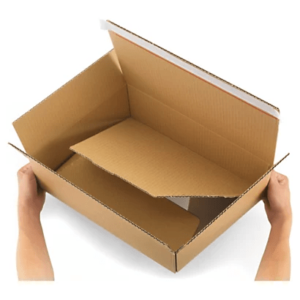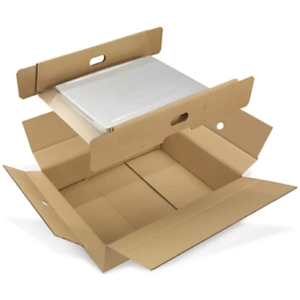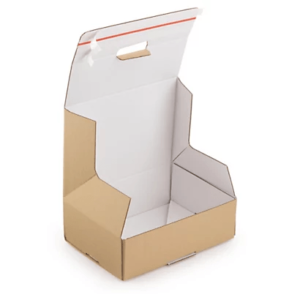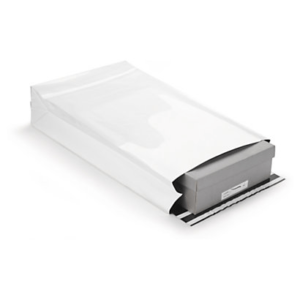Why implement a well-oiled order management process? There are many reasons. On the one hand, fast order processing generates fast delivery, and thus offers an optimal customer experience. On the other hand, it helps to reduce the number of order errors and ensure better stock tracking. This is because fast order processing provides better visibility of available products in stock. As a result, you have the opportunity to implement a streamlined replenishment strategy, ideal for optimising your logistics costs.
Here are 5 tips for implementing an optimal order management process for customers.
1. Minimise order errors
In order to reduce the risk of order errors, the first step is to institute an effective purchase order system. This is because these documents simplify stock management and financial management. They also improve the speed of orders by helping to plan deliveries. The purchase order is therefore intended to facilitate the purchasing process between customers and suppliers.
Secondly, it is beneficial to establish a good logistical picking method. As a crucial step in the order preparation process, the picking phase is best optimised. Choosing the right method for your business and warehouse increases the productivity of your operators and improves the management of physical flows within the warehouse. It also provides optimal safety for your teams, and helps to reduce musculoskeletal disorders.
2. Acquire a logistics WMS if needed
The WMS, or Warehouse Management System, is software used to optimise stock management within a warehouse. Using warehouse management optimisation software allows you to increase productivity, reduce inventory, analyse consumption and optimise storage space. It is also a considerable asset for reducing picking and inventory errors.
The need for a logistics WMS depends on your business, the size of the warehouse, the flows, and the type of products you store. This software is, for example, indispensable for most e-commerce companies. In order to know if acquiring a WMS can be useful to you, you need to assess your needs based on several elements :
- the quantity of product references stored;
- the physical inventory overall and by reference;
- the type of products stored: if you store perishable products for example, the WMS proves useful in particular for managing use-by dates.
3. Choosing the right packaging to make order management more fluid
The choice of packaging is an integral part of a good order management strategy. Indeed, choosing the right packaging can be of great help to order pickers. It saves time on the packing line. Some packaging is designed to make order management more fluid. This is the case with instant assembly crates, where the bottom is locked with a simple push on the sides. Some models have an adhesive strip to make it easier to close.
 |
Our instant assembly cardboard boxes and adhesive closure are quick to assemble and close. |
The integrated cushioning packages also have a special place in the packaging line, as they speed up your packaging rate. The operator no longer needs to prepare the cushioning material. They also provide excellent protection for the product.
 |
Our integrated cushioning packages are durable and offer time savings on your packaging line. |
The appeal of these packages is also that they offer an optimal customer experience. Indeed, the ease of opening, the protective character, but also the design of the packaging convey a good image of the brand.

4. Ensuring optimal customer returns
The order return process is an integral part of customer order management. It is therefore important to implement a reverse logistics policy that allows customers to return their goods easily. Written into your T&Cs, it should show various elements such as:
- the return period: it should not be too short, as the customer must have time to try the products. Nevertheless, for the management of your stocks, the return time should not be too long either;
- the process of returning the goods: this can be an online return request form, or a pre-paid return label to be included in the package;
- the reasons for accepted returns;
- the conditions for refund;
- the retraction period: it is a minima of 14 days in the context of a distance sale according to the HAMON law;
- the coverage or not of return costs: covering these costs is not mandatory, but it is a major argument to sell your products;
- the tracing of the return package.
In order to make customer returns smoother, the best thing to do is to opt for return packages. Strong and equipped with a double tear strip, they allow customers to return their items in the original packaging. For example, you can choose from:
| kraft paper shipping pouches round trip: this type of packaging is perfect for small orders that don’t require protection. | Opaque 60 micron gusseted round-trip plastic pouches: strong, tear-proof and waterproof, they can accommodate a larger capacity than a kraft paper pouch. |
 |
Brown cardboard boxes with two-way adhesive closures: protective, they are secure at the closure and allow for easy re-shipment of the package. |
5. Outsource (all or part of) your logistics if needed
The e-commerce sector has been expanding rapidly in recent years. Despite having processes in place to ensure optimal order management, you may need to resort to a logistics platform. Indeed, outsourcing all or part of your logistics is particularly suitable if you deal with urgent parcels such as daily press or perishable products. It is also worthwhile using a logistics platform if you experience peaks in shipment volumes, particularly in the context of a seasonal business.
Calling on a company specialising in this type of logistics service ensures a time saving in terms of flows and, as a result, improves customer satisfaction. Outsourcing order picking and product packaging also allows you to focus on your core business. It also offers you a reduction in storage and warehouse management costs. Finally, some logistics hubs bundle transport costs, thus making shipping goods cheaper.
Want to improve the organisation within your e-commerce business? Follow these 5 tips from RAJA and ensure optimal order management for both your customers and your operators, with all the benefits that come with it.

















